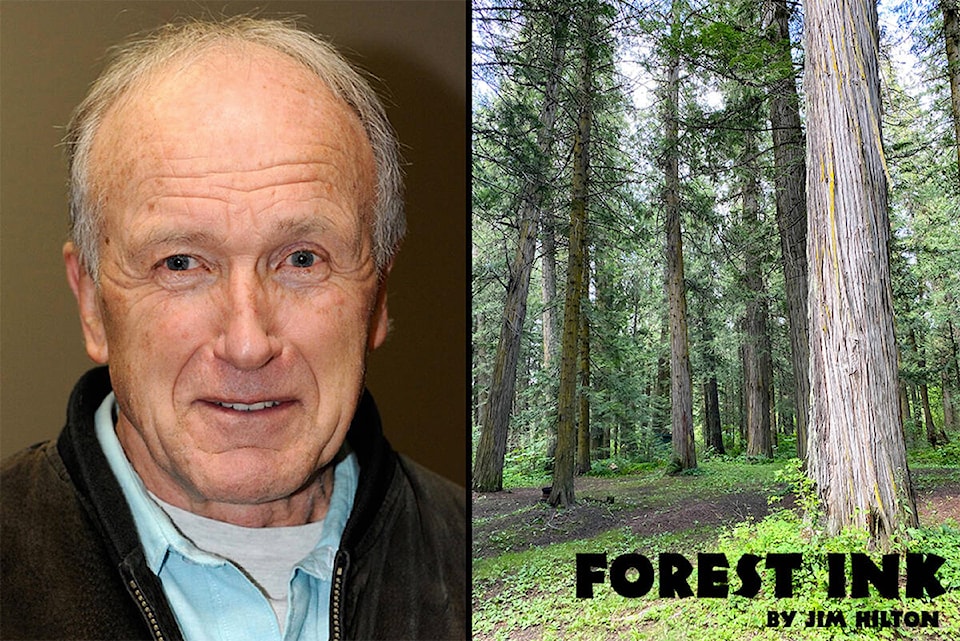Western red cedar (WRC) like lodge pole pine was once considered a nuisance for the logging industry but became profitable starting in the late 1960s when the inventories showed the large volumes that were available. Today WRC is in the news mainly because of its ongoing harvest in the most productive old growth forests on the coast. Old growth forests are defined by the province as being 250 years or older with WRC being one of the most valuable log types, currently selling for two to five times the price of other conifers.
According to the Ancient Forest Alliance, concern is mounting that WRC, along with the old-growth forests that shelter them, may not always be with us. Once a prominent member of the coastal rainforest, red cedar made up 15 per cent of coastal vegetation by 2011, according to the B.C. Vegetation Resources Inventory but a recent report found that less than one per cent of provincial forests contain the largest trees today. To make matters worse it looks like climate change may impact red cedar more than some other species.
In 2011, the standing volume of WRC and yellow-cedar in B.C. was estimated at 750 million m3 (BC Ministry of Natural Resource Operations (MNRO) and BC Ministry of Forests, Mines and Lands (MFML) 2011), 83 per cent of which was coastal and 17 per cent Interior. Nearly 75 per cent of WRC and yellow-cedar growing stock is old-growth, for example more than 250 years old (BCMNRO and BCMFNK 2011). In a subsequent article I will discuss how the percentage old growth can be misleading unless the site index is also included.
While we have some very good growing sites in the Interior, we were well aware of the poor quality of the red cedar compared to the coastal forests. This was confirmed in a recent study of the Interior stands which showed almost all of the 260 WRC trees found on a transect had some heart rot. This not only makes the trees much less valuable for timber production but also makes it difficult to age trees. As a result of these studies the authors made a number of recommendations.
• Harvest WRC trees sooner, i.e. before they reach the age of ‘pathological rotation.’
• Do not practice partial cutting/use of residuals and larger retention trees after harvesting, as both could be sources of inoculum of decay fungi. If residual trees are kept, avoid injuring them as wounds provide major courts for infection. Wounding can considerably accelerate the rate at which decay develops, even in young trees.
• Plant seedlings and do not encourage vegetative regeneration as WRC trees regenerated by layering are considered to be more susceptible to decay. Regenerated propagation is where lower limbs touching the ground will take root and produce a new tree.
I got some first-hand experience recently about Interior log quality when a friend and his son brought a 12-inch red cedar from the Likely area for me to process. What first looked like centre rot turned out to be reasonably stable and we were able to get some good live edge boards from the log. In the past some patient and inventive log processors were able to get some decent lumber from the shells of Interior red cedar.
While stem rot is one of the reasons given for early harvesting cedar trees it is mostly a problem of Interior stands especially WRC where as the coastal cedar can attain old age and large sizes with little rot which makes it a valuable lumber asset as well as an important component of old growth forests.
Do you have a comment about this story? email:
editor@wltribune.com
Like us on Facebook and follow us on Twitter.
